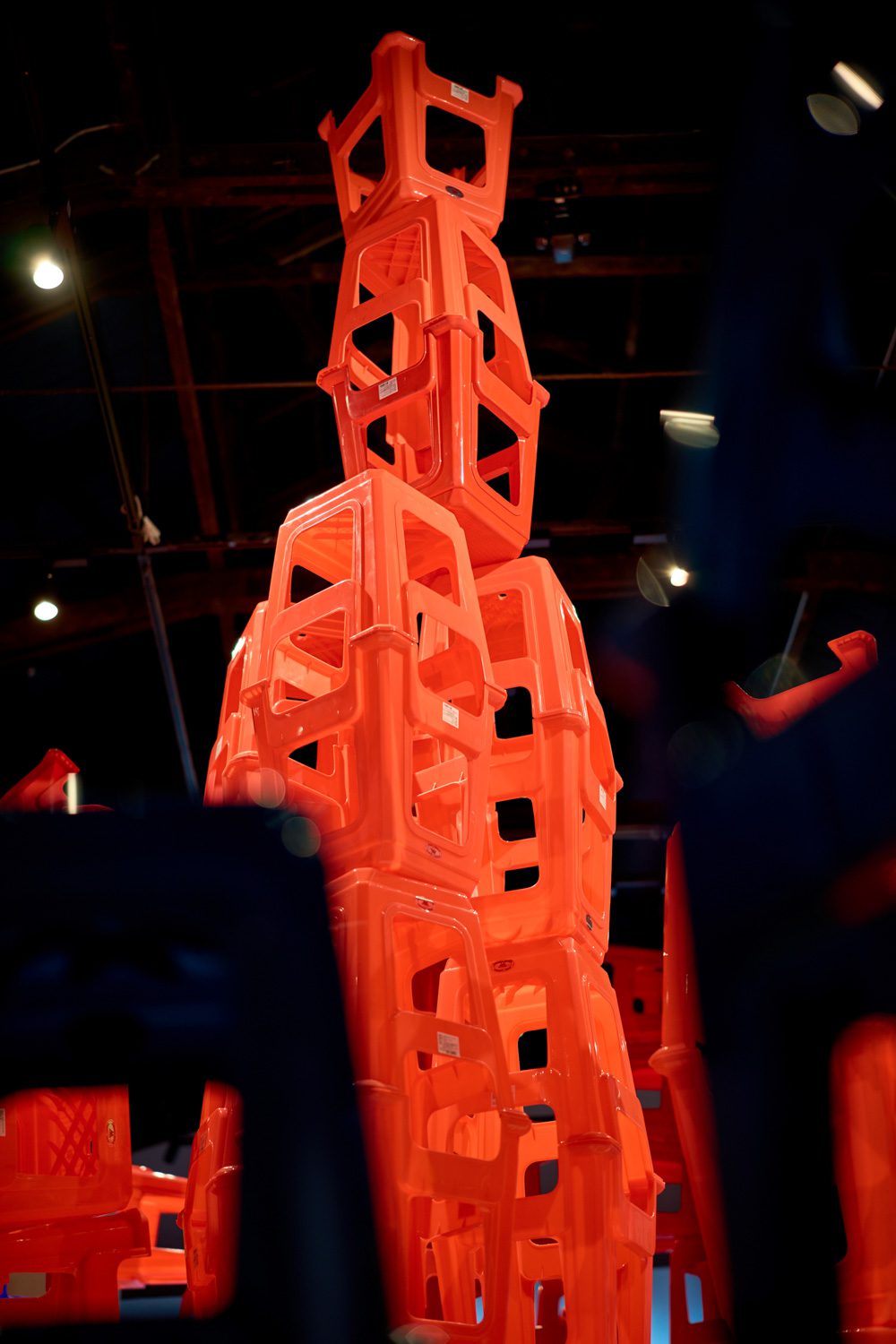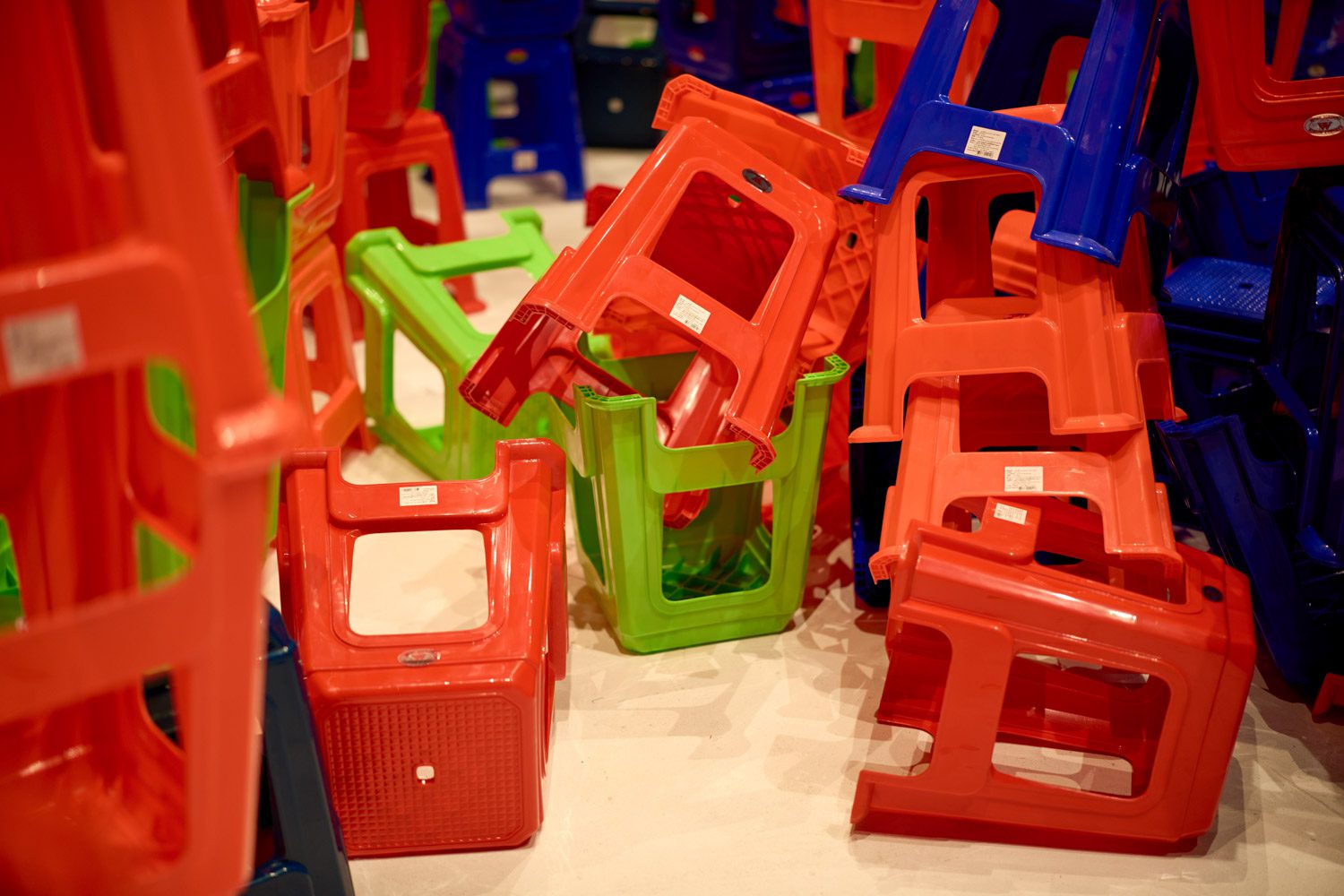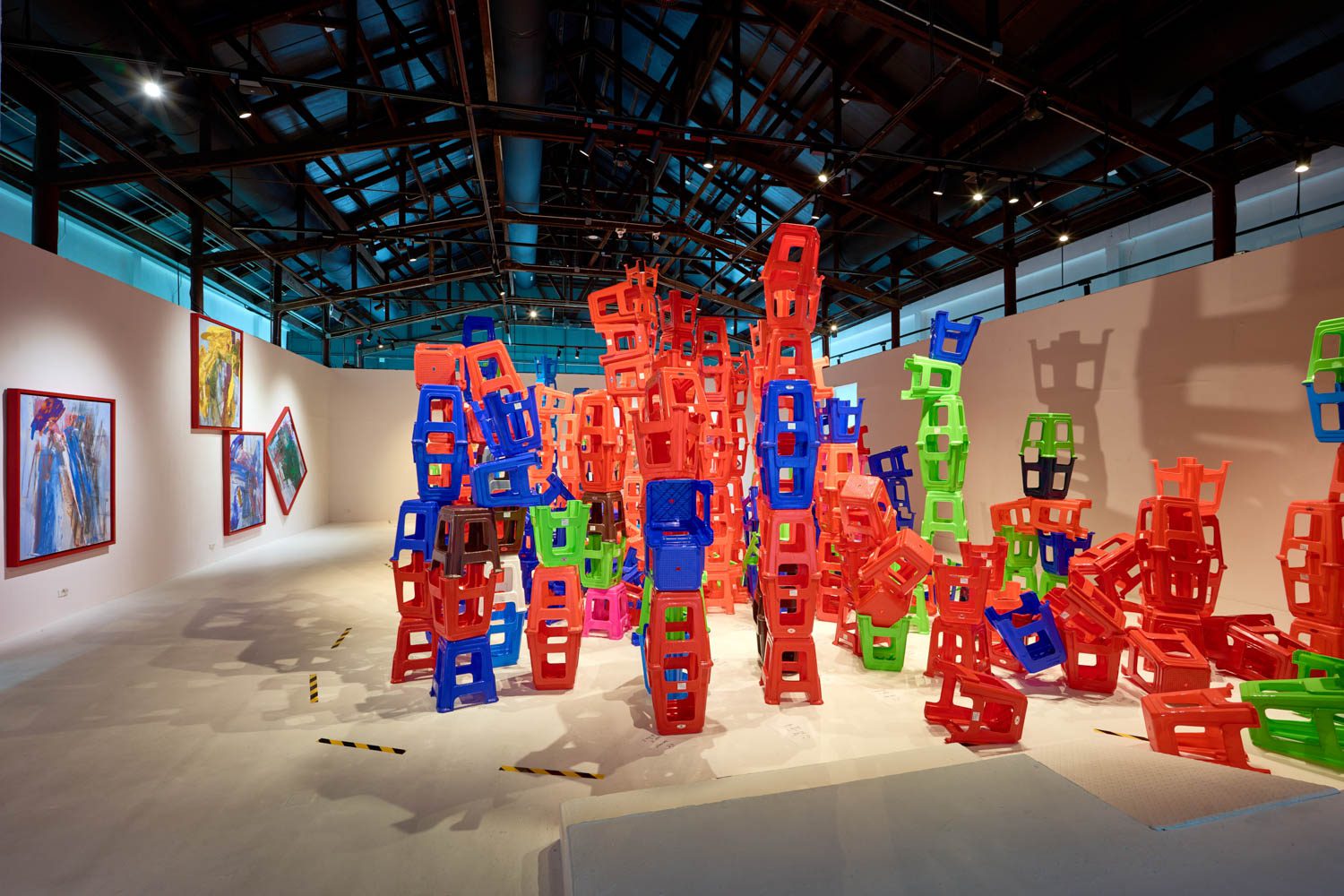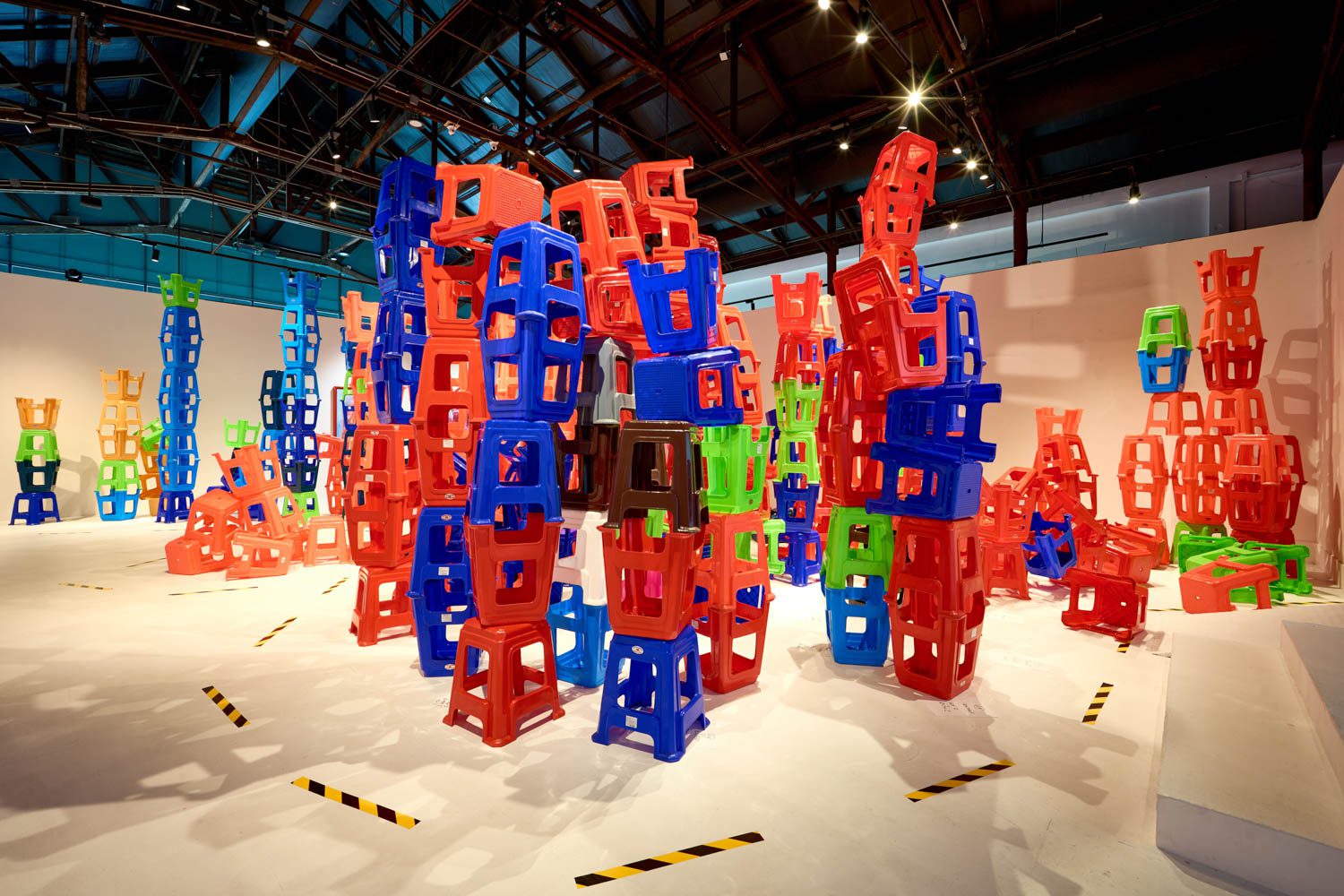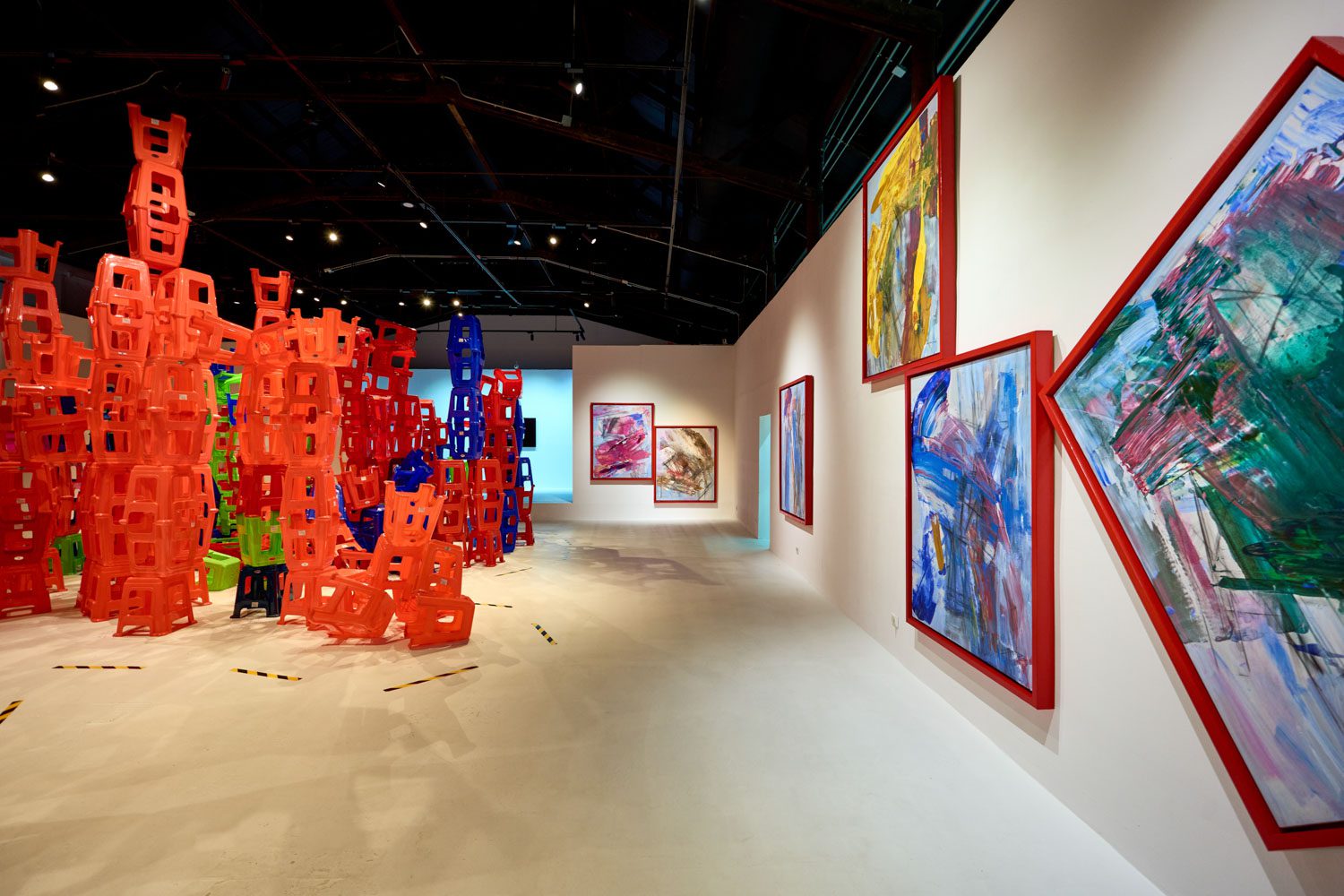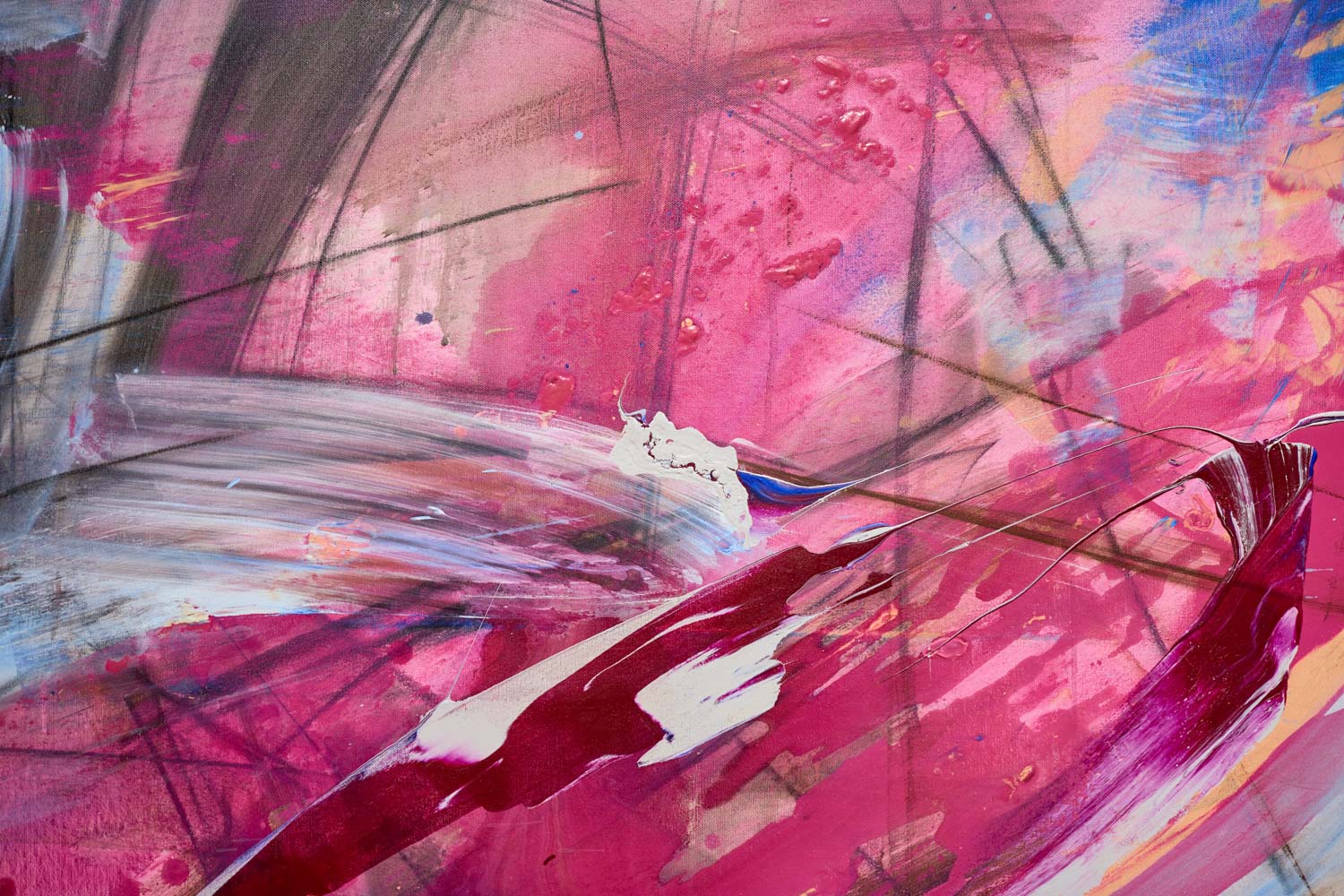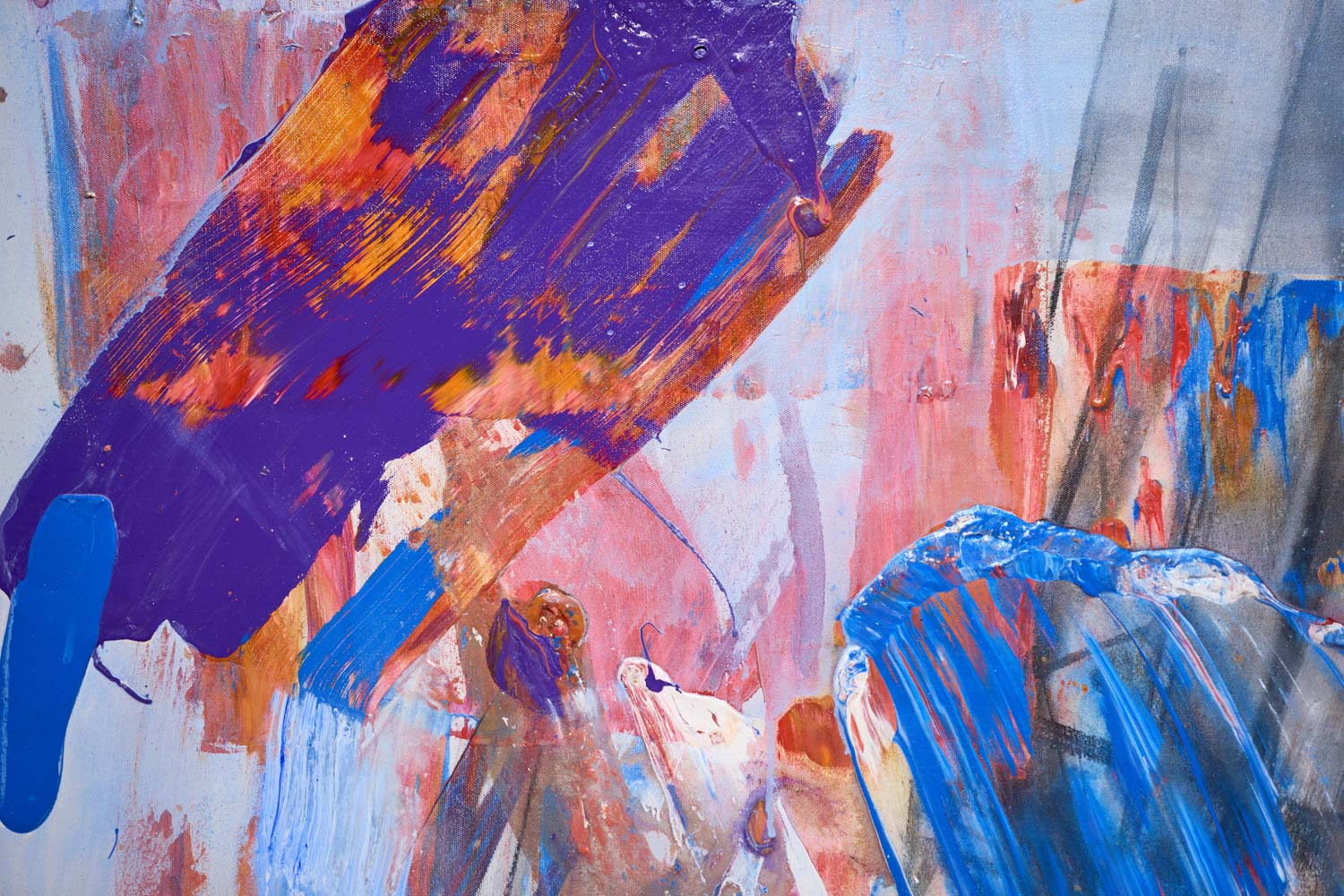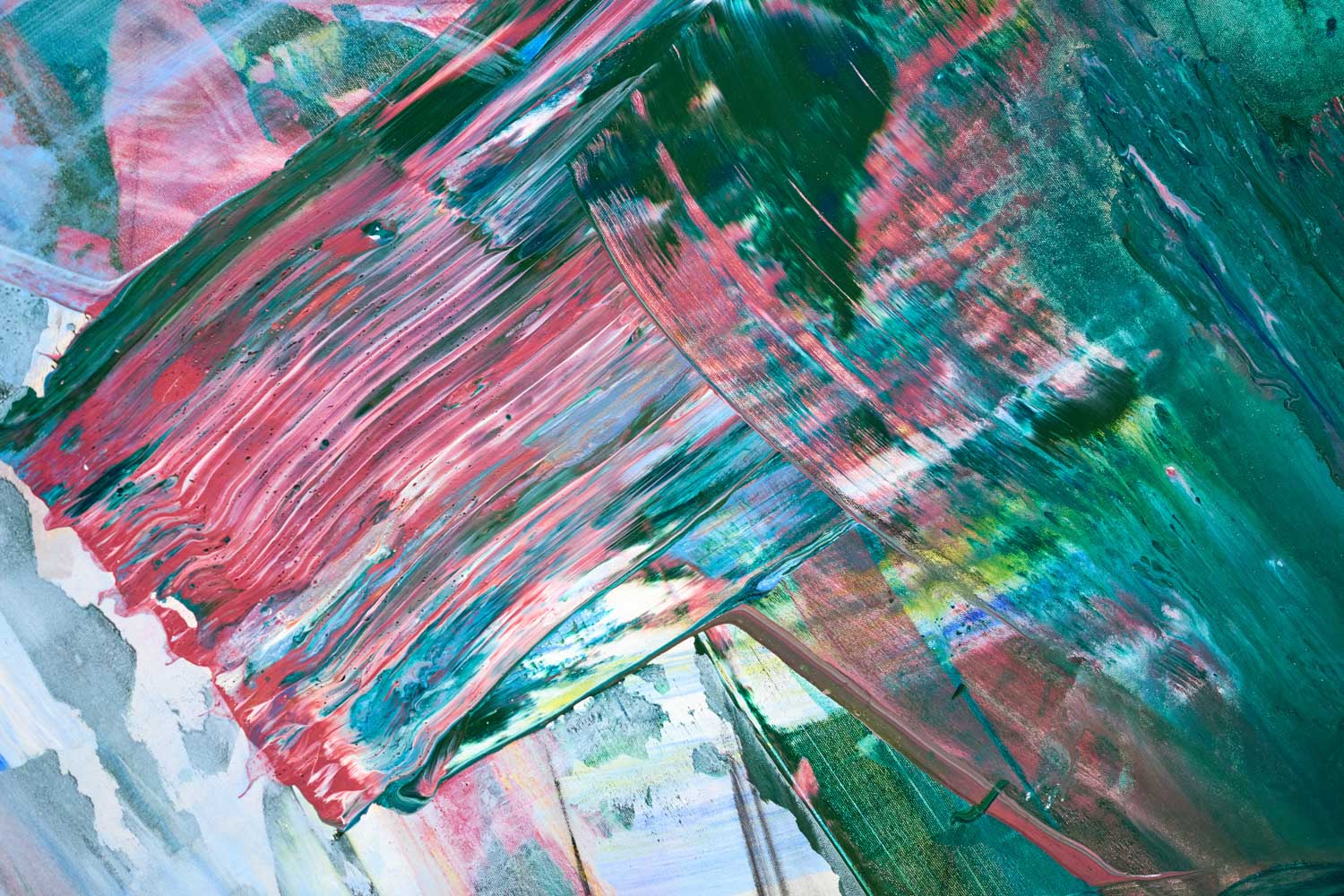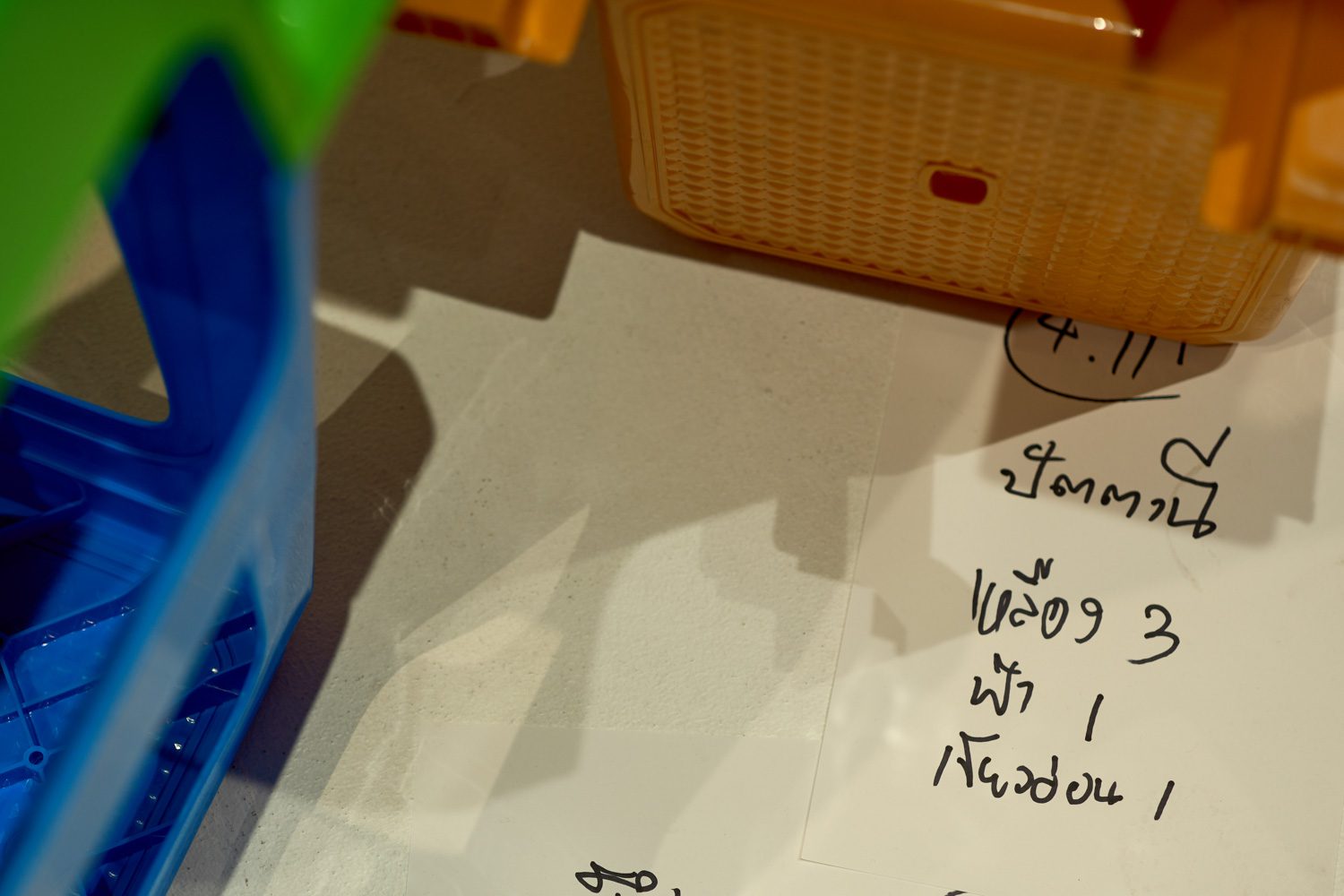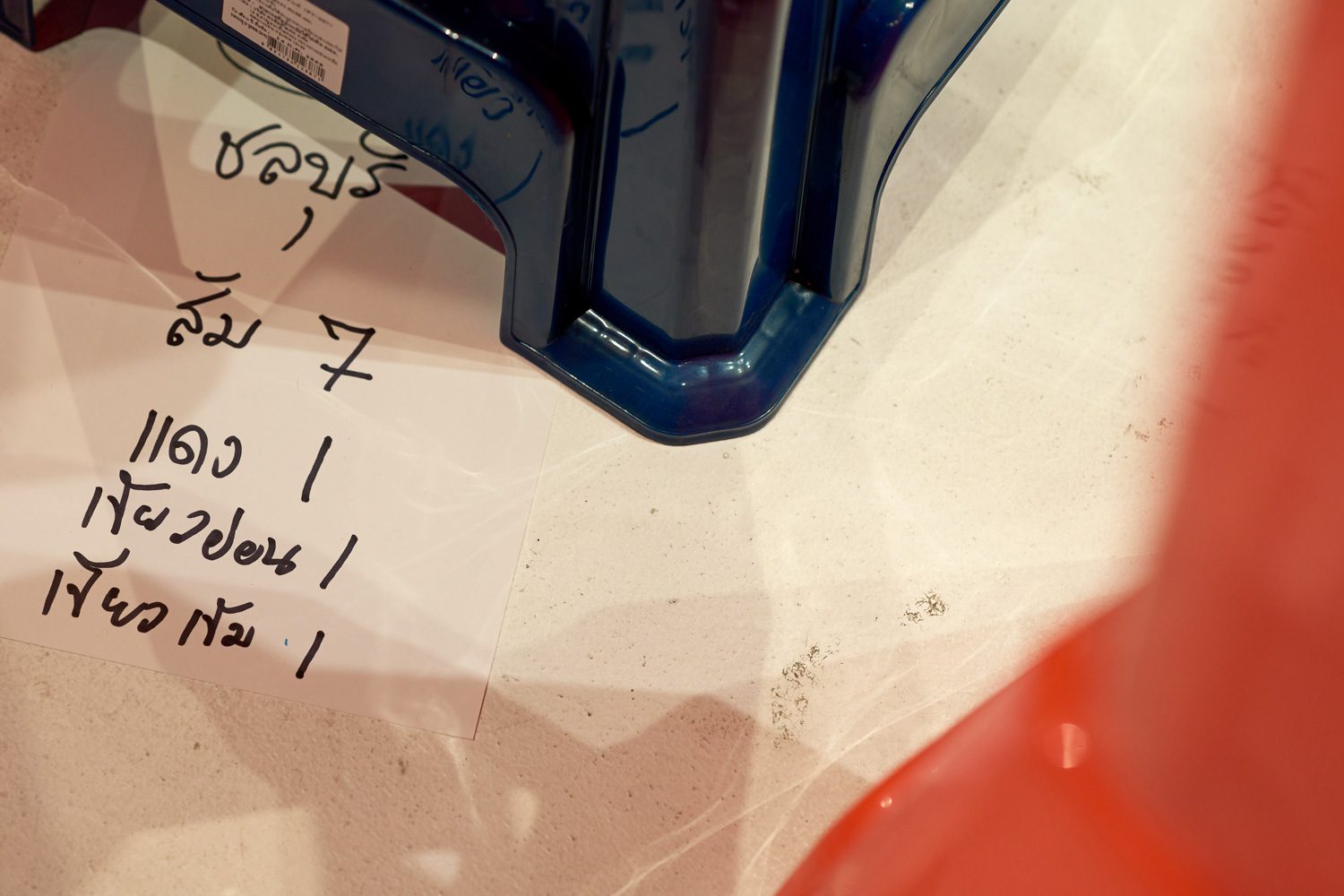VICHAYA MUKDAMANE FORMED A PILE OF COLORFUL PLASTIC CHAIRS AND LET THEM FALL INTO PIECES, LINKING TO THE RECENT THAI ELECTION IN THE MIDDLE OF THIS YEAR
TEXT: KARJVIT RIRERMVANICH
PHOTO COURTESY OF 333GALLERY
(For Thai, press here)
The exhibition has concluded. So, too, was the national election that took place in the middle of this year.
2023 has been a peculiar year. The country appears to have recovered from COVID-19, but people still catch it. Then follows the seasonal flu, whose symptoms are even worse. It feels like we’ve been hit by one thing after another, haunted by seemingly indefinite anomalies. We have a hospital that also serves as a prison, a mixed government, and a digital money project that seems non-existent, not just in its abstract, digitalized form, but for the possibility that it may end up being nothing but a buzzword thrown around in a political campaign to garner votes.
Vichaya Mukdamanee planned to give away the colorful plastic chairs that he fastidiously stacked all the way up to the ceiling of the 333Gallery on the first day of the exhibition. The installation, titled ‘Collapsed,’ is a paradoxical depiction of what reality appears to be. Vichaya’s stacking of chairs is recorded and shown in video footage projected on one of the walls of the gallery. The procedure is slow, delicate, and meticulously carried out since if one chair falls, it will create a domino effect that will cause the entire structure to collapse.

These chairs act as an infographic depicting the most recent national election. The 400 stacked chairs symbolize the 400 electoral districts, while the colors of the chairs are an illustration of the parties participating in that election. At the center of the room, 32 piled orange chairs represent Bangkok, Thailand’s so-called ‘heart’ (one red chair, despite appearing harmonized at first glance, is clearly the odd one out). From the center, the chairs set in a gallery corner portray the southern region, with the gold tip representing the Prachachart Party, while blue is sparse and nearly invisible. In another area of the room, the chairs are larger in number and stacked in such a way that they reflect high density and diversity, with orange and red being the dominant colors and several additional colors sporadically appearing in the lot.
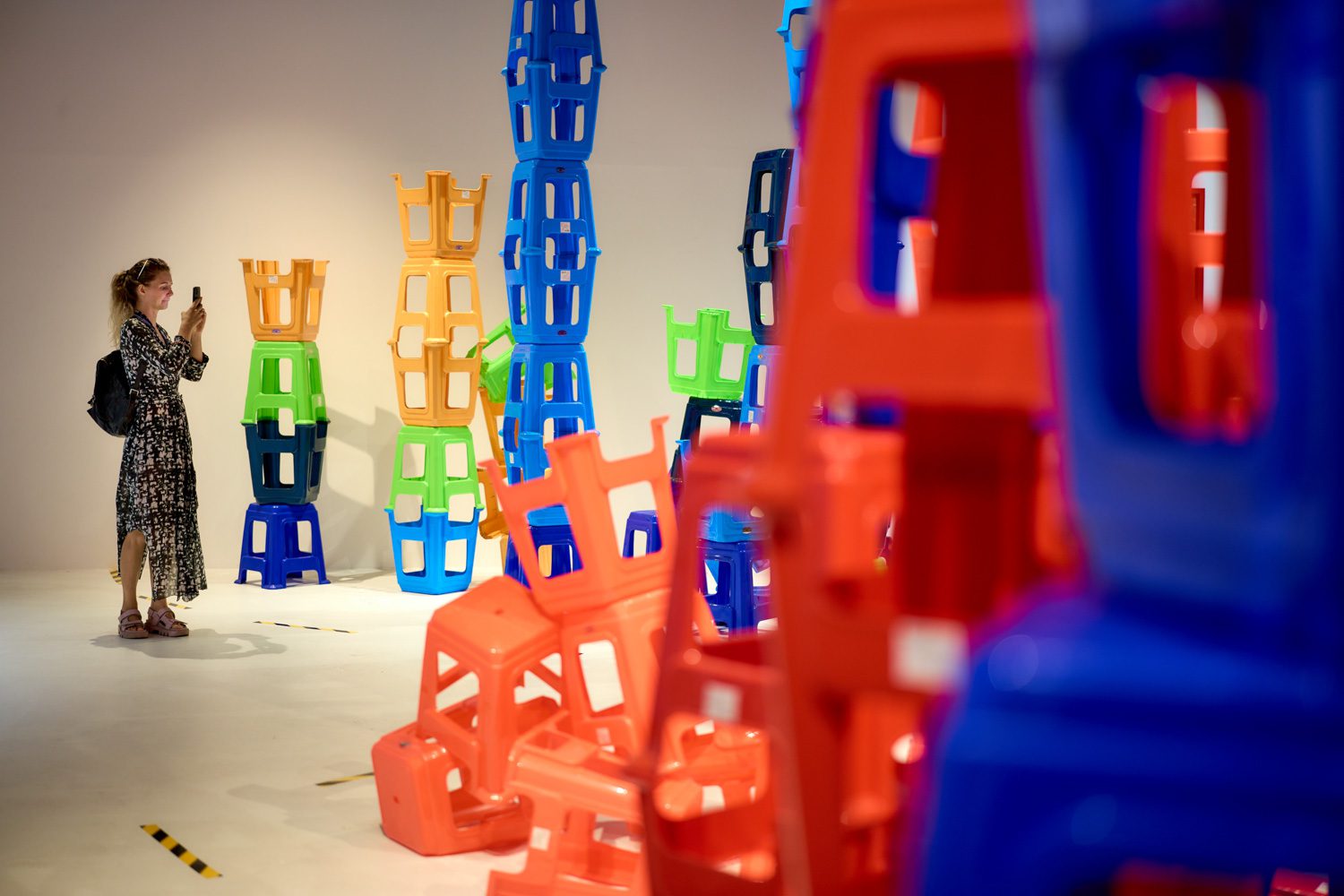
A variety of paintings are displayed on the walls alongside the chair installation. Each frame contains a vibrant use of color. “In each of the paintings, certain colors overpower others, and the red frame is meant to represent a particular political party,” Vichaya stopped by and gave us a brief explanation while attempting to explain the entire context of the exhibition to a Filipino viewer who ended up bringing home an orange chair.
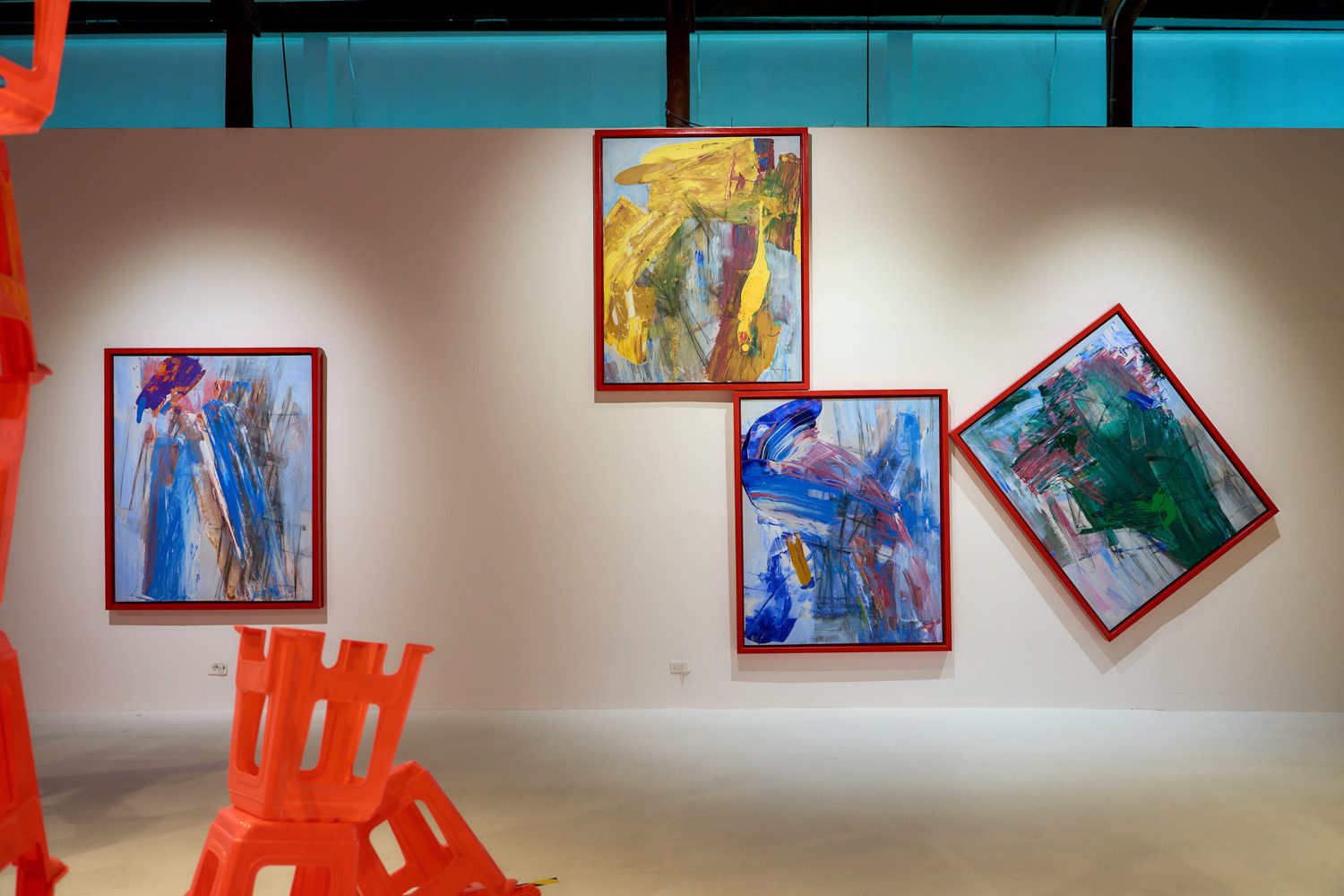
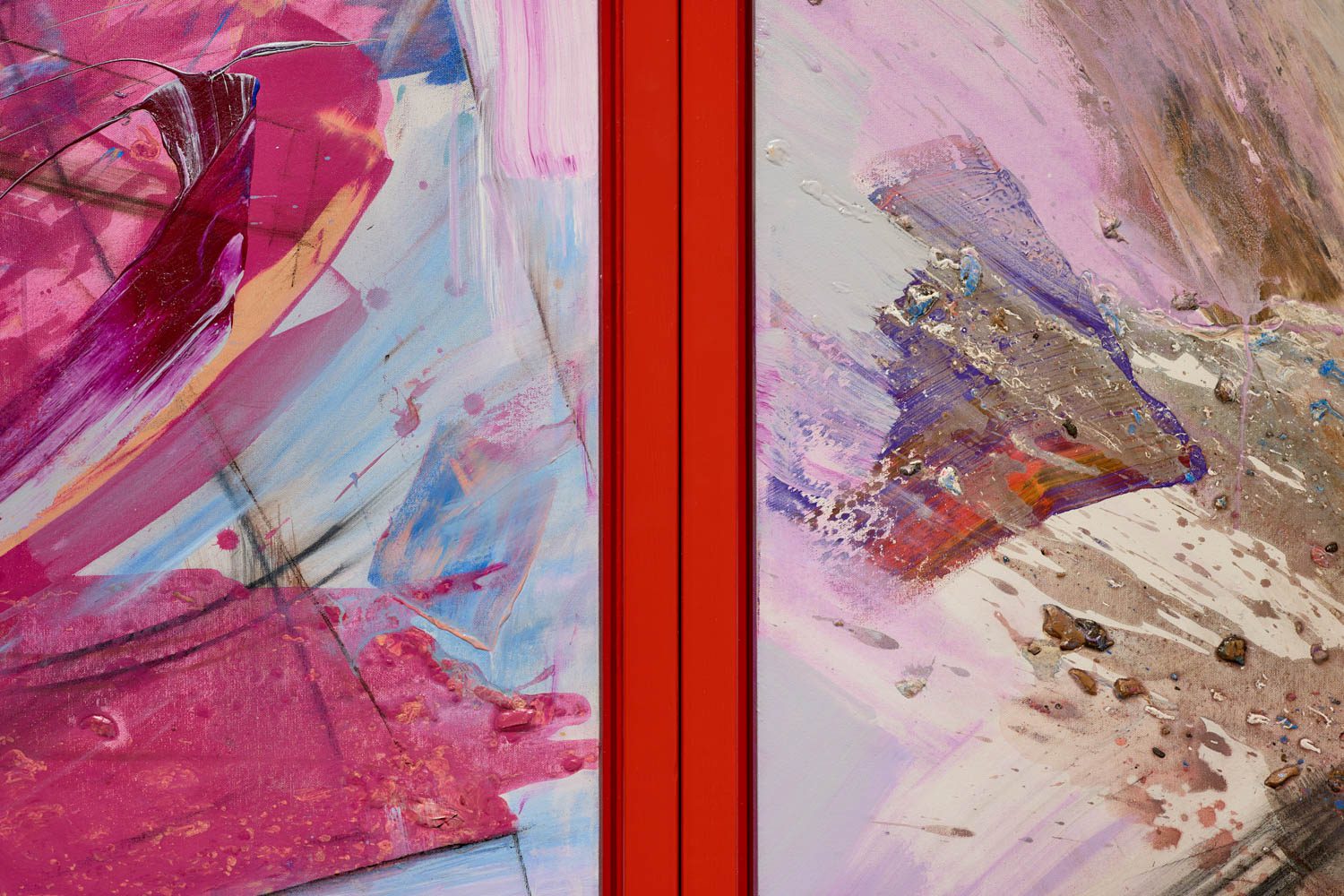
My six-year-old daughter was having fun choosing a chair to take home. A brown chair erected in the northeastern region drew our attention. Vichaya stated that the color represents the Thai Sang Thai Party, but because there are too many shades of blue already utilized in the piece, he needed to choose another color. The obstacle for us was that the chair was at the bottom of the stack, symbolizing a certain voting area. I assumed and believed that Vichaya was preparing the entire exhibition for the moment when he could push other chairs of all colors placed above the brown chair and cause the entire installation to collapse to the point where the viewers would no longer be able to comprehend the infographic he painstakingly crafted.
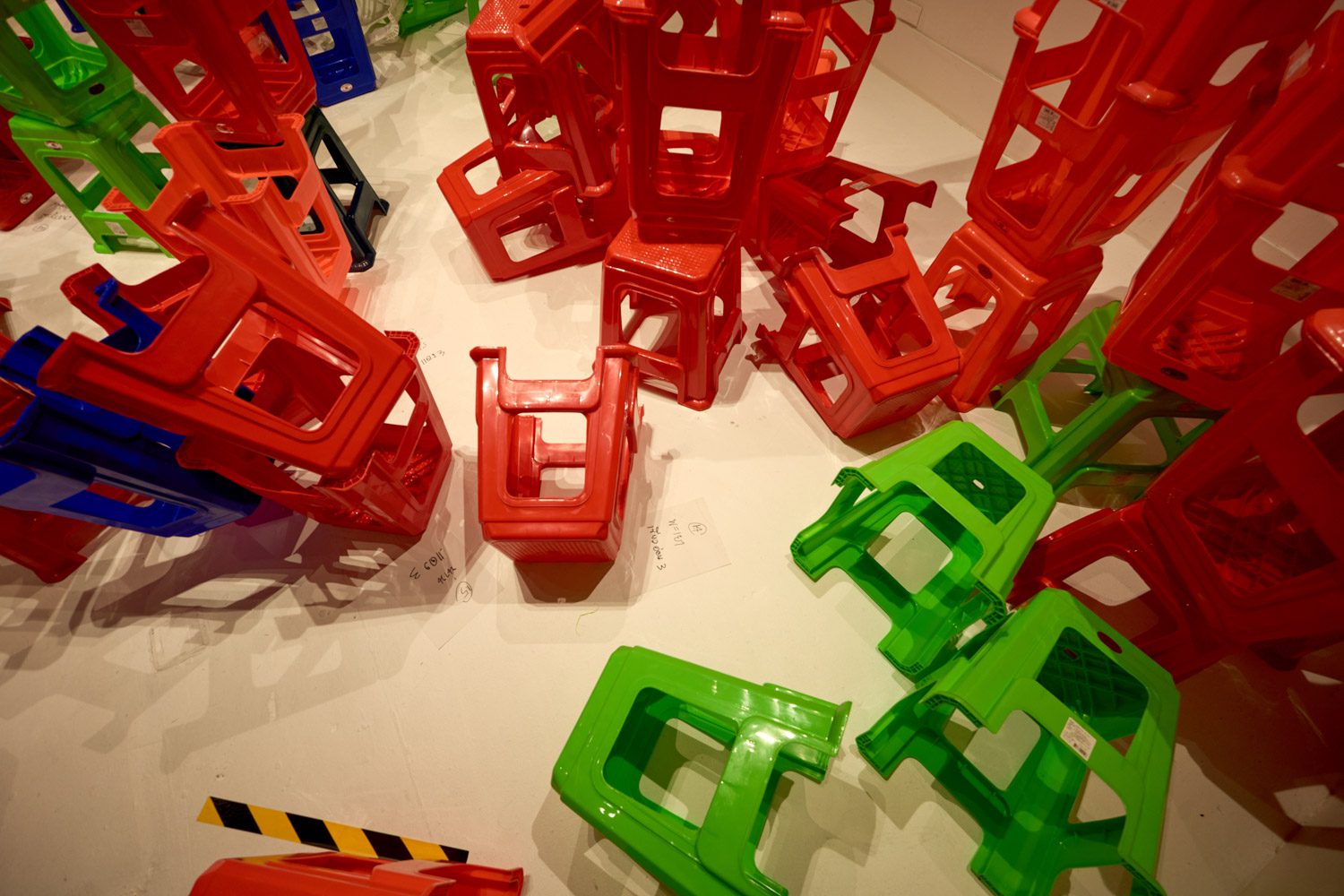
Vichaya then attentively signed the brown chair for my daughter. “My intention is to return these votes to the hands of the people who rightfully own them on the first day of the exhibition,” he added while taking a picture with my daughter, who will have the right to vote in 12 years or three elections if the country is able to break free from the coup cycle.
The image shows a little girl and an artist standing in front of a collapsed pile of chairs in the background. The image contradicts the laborious, precise, and detailed effort that went into creating the installation and the rest of the exhibition. On the other side of the gallery’s space, the video playing is far too long for us to remain engaged and watch till the end. It’s a video of the artist and a couple of his assistants putting together the chairs one by one to illustrate the election results, only for them to all crumble at the hands of one person, the artist himself, who isn’t even the source of all the data and reasons that were used to create it.


As hopes and dreams for this country still get passed on from one generation to another, wishful thinking is that one day, these chairs will be placed based on people’s true voices, and they will not and cannot be arbitrarily overthrown and collapse solely because of someone’s order and demand.
